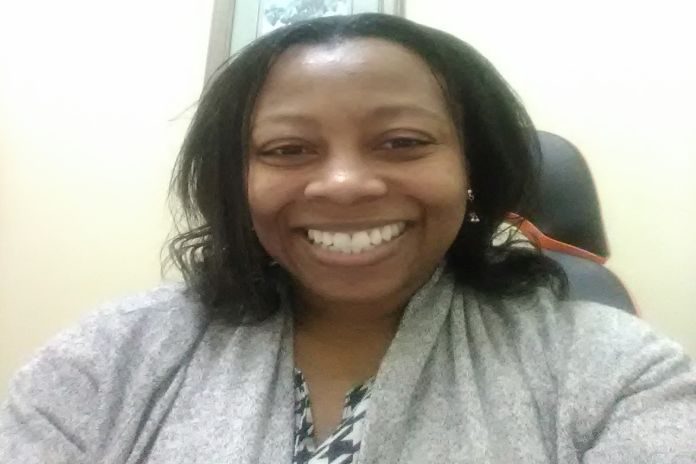By Akilah Holder
Imagine you are standing downriver, and while standing there, you see someone getting washed away. Immediately, you jump in and pull the person to safety. After pulling that person out, you notice another getting washed away, so you jump in and pull that person out. After rescuing about five people, you become, naturally, exhausted; so you go upstream and see what is responsible for the chaos. When you get upriver, you notice a hole in the bridge and that several people, unaware of this hole, are accidentally falling through it. What is the next logical step? Cover the hole.
The analogy above is known as the prevention parable and was given by Dr Nanci Coppola, chief executive officer (CEO) of the Program Reach and the Healthy Respect Program in the United States to explain the concept of primary prevention in medical care. Coppola gave the analogy while speaking at a Healthy Respect Training on Emancipation Day at the Chaguanas Evangelical Bible Church, Chaguanas, where she taught the value and importance of Sexual Risk Avoidance (SRA)/ Abstinence, an approach to teaching sexual education considered primary intervention. I attended the event.
Notably, as explained by Dr Coppola, there are three different approaches to medical care: primary intervention, which seeks to prevent the onset of disease; secondary intervention which involves early detection of a disease and prompt treatment and tertiary which involves the rehabilitation of someone who already has the disease.
Therefore, SRA is considered primary intervention since it seeks to prevent the problems that come along with pre-marital sex as opposed to simply reducing the risk of contracting an STD or becoming pregnant, which is the goal of Comprehensive Sexual Education (CSE)/Sexual Risk Reduction. Dr Coppola asserted, given that SRA, as a primary intervention measure, will prevent negative consequences, it should be taught in our schools.
Additionally, she averred that CSE’s emphasis on condom use neglects the fact that condoms do not protect against all STIs and in focusing on the negative physical consequences of adolescent sex, neglects the social, economic and psychological consequences of sex. Her assertions are supported by the findings of Dr Stan E. Weed and Dr Thomas Likcona in their essay, Abstinence Education in Context: History, Evidence, Premises, and Comparison to Comprehensive Sexuality Education.
She also explained that as a secondary prevention measure, it can result in inequality in the public health care system and is more costly for a nation; and while media reports in the US and here tell a different story, there is not sufficient evidence that risk reduction works. She cited relevant research to support her postulations.
One piece of research used was Dr Stan E. Weed’s 2008 Testimony Before the US House of Representatives Committee on oversight and government reform. In it, Weed posits that, “…a recent publication from the national campaign to prevent teen and unplanned pregnancy…lists 28 programs that have the ‘strongest evidence of success.’ …Upon closer examination, however, we see that 20 of those 28 programs did not measure rates of teen pregnancy as an outcome. Of the eight programs that did, two did not reduce teen pregnancy, only three reduced pregnancy for 12 months or longer.
Of those three, one was not a sex education program, it did not include any sex education or discussion of sex (Lonczak, et al., 2002) and one of the remaining two were found to be ineffective in a second evaluation study by Dr Doug Kirby (Kirby, et al., 2005). This leaves only one comprehensive sex education program that reduced teen pregnancy rates for at least one year, out of 28 supposedly effective programs…” This, as Weed noted, did not constitute strong evidence that CSE programs work.
Moreover, CSE, in sending the message that it’s ok for teens to engage in premarital sex, ignore the fact that premarital sex disadvantages women. Coppola explained, for example, that the HPV vaccine, though touted as a safeguard against cervical cancer, only protects against some strains of HPV, four to be exact: HPV-6, 11, 16, and 18. She stated that there are 200 types of the Human Papilloma Virus, some which cause genital warts.
She also explained that women’s biological makeup; make them more vulnerable to getting hurt. Women release, she explicated, oxytocin in higher amounts and faster than men do; so premarital sex always disadvantages women.
In addition, the push to teach CSE suggests that adolescents cannot be taught not to engage in sex; but as Coppola pointed out, should we then, given that many teens use drugs, say to them, go ahead, but let me show you how to be safe?
I think these findings deserve attention, for they highlight a little-explored side of the debate over whether to teach CSE or SRA in schools.
Moreover, I noted something about the prevention parable that wasn’t highlighted at the event. The time it took the person to go upstream to see what was causing the problem, other people would have kept falling into the hole; and since that person was upstream, some lives would have been lost.
And as for those who were pulled out? They would have had the misfortune of going through the trauma of the event, scarred for life. It all comes back to that adage, that Dr Coppola also pointed out, prevention is better than cure.






